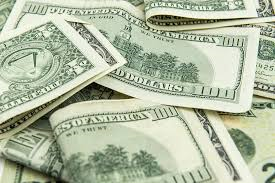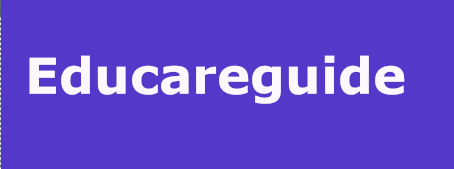Today, Educareguide is considering the Ways To Control Money Supply In An Economy. Thus, you will find all the details on the means to control money supply in a country below:
Educareguide explores exam past questions and answers in addition to many things. At this time, we are looking at this exam past question and answer, and we will look at this topic in greater detail.
It is the central bank’s work to control the money supply in an economy. The money supply mechanism can also be referred to as monetary policy tools.
Stay tuned and keep reading. Our content will answer the banking question of many business people and students alike.
Click For The Summary Of This Guide
This Note Is Relevant To Students Writing The Following Examination – Exam Past Question And Answer
- Cambridge International College (CIC)– Business Administration
- Institute of Commercial Management (ICM)– Business Administration
- And many others.
I must say that this content is a solution to many exam questions. It is not relevant to only business management, however, it is also very relevant to the economics exam question that you will encounter.
Instruments Of Monetary Policy Used By the Central Bank
The Bank Rate- a tool the Bank of Japan uses to regulate the money supply
The bank rate is the pivot of all interest rates because they depend on it. The interest rate charged by the commercial banks depends on the bank rate:
The bank rate is the minimum rate of interest that the central bank charges on loans and advances granted to commercial banks and for re-discounting bills of exchange.
If the hank rate were high, all other rates of interest would be high and vice versa. If the central bank wants to reduce the money supply, it raises the bank rate so that commercial banks would be discouraged from borrowing, more.
If the bank rate is high, commercial banks will also raise the interest rate on loans they grant to their customers and thus deter them from borrowing.
On the other hand, if the central bank wants to increase the money supply, the bank rate would be reduced.
The effectiveness of this policy mostly depends on the business atmosphere. If there are lucrative business activities, businessmen will still borrow from the commercial banks irrespective of the rate of interest and hence commercial banks will also go to the central bank to borrow money no matter the level of the bank rate.
I must say that if you want to find out how the central bank control money supply, then the use of the bank rate is among the three main tools of monetary policy.
Open Market Operation- a mechanism the Bank of Canada (BOC) uses to regulate money supply
The most important tool that the central bank has for influencing the supply of money is the purchase and sale of government bonds and other securities in the open market, known as open market operation.
The central bank sells securities to commercial banks and the public to reduce the money supply.
Customers of the commercial banks who want to buy the securities will draw cheques from the commercial banks, thereby reducing the reserves of the commercial banks.
Through this process, money moves from the public through the commercial banks to the central bank, thereby reducing money in circulation.
The central bank buys securities from the commercial banks and the public when it wants to increase money in circulation.
This will increase the cash vault in commercial banks, and thus enables them to grant loans and advances to the public, increasing the money supply.
The effectiveness of this policy depends largely on the level of monetization, that is the existence of the money and capital markets.
If money and capital markets are developed in the economy the policy will be effective and vice versa. This is the most ineffective instrument in developing countries because the level of monetization and education is low.
The Cash Ratio- an instrument the Bank of Australia use to regulate money supply
This is the minimum percentage of commercial- banks deposit (cash reserve requirements) which is expected to be kept with the central bank. The tool is among the four major instruments of monetary policy of the central bank.
To reduce the supply of money the central bank raises the cash ratio so that the commercial banks are legally obliged to deposit a huge Percentage of their cash with the central bank.
This will reduce the cash in the vault of commercial banks and thereby making them unable to grant more credit to the public. The reverse is true if the central bank wishes to increase the money supply
The effectiveness of this policy depends on whether the commercial banks have enough short-term securities or not.
If they have, it implies that they can easily sell them to the central bank to get some cash and make the policy ineffective.
Besides, the policy may not be effective in the least developed countries due to the dominance of expatriate banks.
Special Deposit- a method the Bank of New York uses to regulate money supply
Apart from the constant deposits, the commercial banks are legally obliged to keep a special percentage of their deposit with the central bank. When special _deposits are kept with the central bank, the amount of money left with commercial banks is reduced and as a result their ability to give loans also reduces.
This weapon is very effective .because the central bank can call for a huge of the
commercial banks’ deposits as special deposits thereby reducing tremendously the cash in their vault and hence checking their ability to give more loans.
However, the foreign banks’ problem may hinder this policy’s effective operation.
Directives- a tool the bank of England use to regulate money supply
Directives is instruments of monetary policy used by the central bank. They are in the form of instructions given by the central bank to the commercial banks regarding the direction of their loans and advances.
It tells the commercial banks where their loans should go and the percentage they should grant. For example, the central bank may direct that so much should be given to the Agricultural and Industrial sectors but nothing to private businessmen.
The effectiveness of this policy depends on the government’s interference and availability of collateral securities. This policy has been ineffective due to a lack of supervision which enables the commercial banks to follow the directives.
Moral Suasion- a means the Bank of Kenya uses to regulate money supply
Moral Suasion is an appeal by the central bank to the various commercial banks to reduce or increase the money supply through credit creation.
This policy may not be effective unless it is backed by law as an instrument of monetary control. Besides, most of the banks are profit-oriented organizations.
Examination Authorities That Ask Questions On Monetary Policy
Indeed, the following bodies examine students on Instruments of monetary control used by the central bank:
- Waec Wassce Business Management.
- Waec Wassce – Social Studies
- Cambridge International College (CIC)– Business Administration
- Institute of Commercial Management (ICM)– Business Administration
- And many others.
Indeed, all the examining bodies listed above ask questions on Instruments Of Monetary Policy Used By The Central Bank in a country.
Honestly, I believe you have all the information you need concerning ways to control an economy’s money supply.
Now find out other content that relates to ways to control the money supply in an economy right below.
You Might Have Interest In The Following As Well:
- What are the qualities of money?
- The problems that poor countries face in the world?
- What is a valid contract in business – the principles of contract.
- The meaning of consideration in Law.
- Which organizational structure will best fit your business organization? Find out here.
- What are the importance of planning to the success of your business?
- Which laws must businesses conform to?
- Is every business contract valid? Find the answer here.
- What are the types of contract your business may enter into?
- Services that your bank can offer to you.
- What is a private limited company?
- Sources of finance for private enterprises.
- The best ways you can manage your time as a business person.
- What are the best ways you can brand your products and your enterprise?
- The ways in which workers unions can impact the profitability of your business.
Conclusion:
I believe Educareguide has helped you to understand this subject matter. Also, there is much more information available on our website to help you in your education.
Furthermore, if there is any contribution or comment, or concern that you would want to make, it is warmly welcomed on our site. Simply proceed to Login or Register to submit your post.
Now, please, subscribe to Educareguide and contact us for further assistance for your education. Finally, fill the contact form on the sidebar to reach us.
Nevertheless, do not forget to pass a comment in the comment section below. Indeed, we will gladly appreciate knowing how you think about this article. Thanks.





